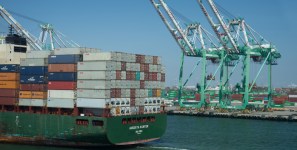Global Shipping Faces Turbulence: Chokepoint Disruptions Threaten Trade and Supply Chains
The maritime industry is navigating treacherous waters, as critical shipping chokepoints face unprecedented strain, threatening global trade, food security, and energy supplies. According to the 2024 Review of Maritime Transport by the UN Conference on Trade and Development (UNCTAD), the stability of global supply chains is being undermined by geopolitical tensions, climate change, and regional conflicts.
Read also: Global Shipping’s Headaches – a Drought and Rocket Fire
While maritime trade grew by 2.4% in 2023, totaling 12.29 billion tons, the outlook for 2024 is fragile, with just 2% growth projected. Disruptions at key chokepoints such as the Panama Canal, Suez Canal, Red Sea, and Black Sea are leading to higher shipping costs, longer transit times, and strained logistics networks—putting recovery efforts at risk.
Chokepoint Disruptions and Rising Costs
The Panama and Suez Canals, vital arteries of global trade, are under immense pressure. By mid-2024, traffic through both had dropped over 50%. The Panama Canal faced low water levels due to drought, while conflict in the Red Sea disrupted transit through the Suez Canal, where tonnage declined by 70%.
As a result, ships have increasingly rerouted around the Cape of Good Hope, with arrivals there surging by 89%. However, this shift carries financial consequences. Container ships carrying 20,000–24,000 TEUs on the Far East-Europe route now incur an extra $400,000 in emissions costs per voyage, due to the EU’s Emissions Trading System (ETS). These diversions are adding to shipping delays and contributing to environmental impacts.
Logistical Bottlenecks and Supply Chain Strain
The diversion of vessels has created congestion at major transshipment hubs, including Singapore and key Mediterranean ports, as rerouted traffic overwhelms port capacity. Global vessel demand has grown by 3%, while container ship demand is up by 12%, intensifying strain across supply chains.
The impacts of these disruptions are being felt most by vulnerable economies such as Small Island Developing States (SIDS) and Least Developed Countries (LDCs), which rely heavily on maritime connectivity for essential imports. If disruptions continue, global consumer prices could rise by 0.6% by 2025, while prices in SIDS may increase by as much as 0.9%.
Climate Change: A Growing Risk
Extreme weather events are becoming more frequent, impacting port operations and further complicating maritime logistics. Chokepoints like the Panama and Suez Canals are especially vulnerable to these disruptions, threatening both operational safety and shipping schedules.
UNCTAD’s report urges the maritime industry to invest in infrastructure and capacity building to mitigate the risks posed by climate change. The sector must also accelerate the shift to low-carbon technologies to align with global decarbonization goals.
Decarbonization and Fraudulent Practices: Key Challenges
Despite commitments made by the International Maritime Organization (IMO) to reduce greenhouse gas emissions, the transition to greener shipping remains slow. In early 2024, only half of new ship orders were for vessels capable of using alternative fuels, while aging ships remain in service due to high demand and rising freight rates.
Another emerging challenge is the rise of fraudulent ship registrations. These so-called “dark fleet” vessels operate outside international regulations, posing risks to safety, pollution control, and seafarer welfare. UNCTAD urges countries to support IMO efforts to crack down on these practices and strengthen maritime enforcement.
Building Resilience for Future Disruptions
To safeguard global trade, UNCTAD’s report recommends several measures:
1. Strengthening infrastructure to ensure ports and shipping routes remain operational under stress.
2. Accelerating fleet renewal with a focus on alternative fuels to meet decarbonization targets.
3. Enhancing maritime connectivity for vulnerable economies, particularly SIDS and LDCs, to keep them integrated into global supply chains.
4. Combating fraudulent ship registrations to uphold international maritime standards.
A Critical Juncture for Global Shipping
The maritime sector is facing a perfect storm of disruptions, with chokepoint bottlenecks, climate change, and geopolitical instability converging to threaten global trade. While modest growth is expected in 2024, the industry’s ability to adapt will shape the future of global supply chains. A coordinated global effort is essential to build resilience, lower emissions, and maintain maritime connectivity, ensuring that shipping remains a cornerstone of the global economy.





Leave a Reply